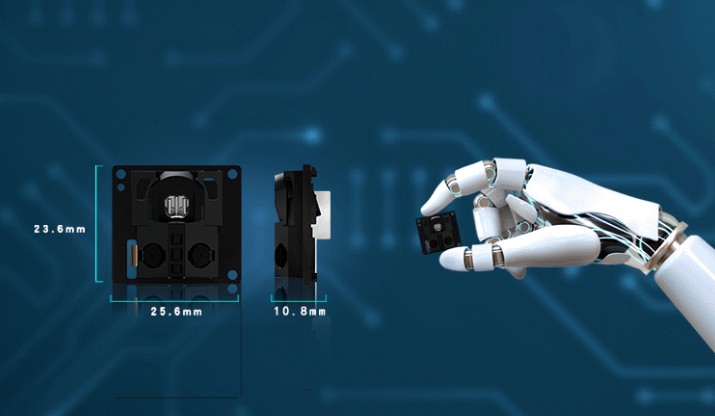Solution | The Robotic Vacuum Cleaner has "It" - Letting You Lounge on the Sofa Every Day

As people's lives become more intelligent, robotic vacuum cleaners have increasingly become important members of households. "Freeing up your hands" is essential for busy urban lifestyles. However, during the evolution of robotic vacuum cleaner functionalities, a dilemma has emerged as a thorny issue.
What is this dilemma? For example, when you lie on the sofa playing with your phone, the diligent "robotic vacuum cleaner" gets stuck in the gaps of the sofa. Or when you lie flat on the bed, it gets stuck near the cabinet. Or when you are busy in the kitchen, it gets entangled with clothes hanging close to the ground...
Currently, the navigation LiDAR of robotic vacuum cleaners primarily focuses on 2D plane obstacle recognition and mapping. There is no effective solution for the recognition of 3D obstacles in mid-air. Therefore, faced with the pain points of using robotic vacuum cleaners at this stage, "recognition of mid-air obstacles" has become the breakthrough point for innovation for many brands.

Solution
Addressing this pain point, Shenzhen EAI Technology Co., Ltd. (EAI Technology), a "national-level specialized and innovative 'small giant'" enterprise with years of expertise in intelligent sensors and solutions, has introduced the independently developed and cost-effective "Linear LiDAR GS2." By installing the GS2 in front/side of the robotic vacuum cleaner, it can create a three-dimensional scanning plane. Through the longitudinal scanning of the GS2 line laser, it can accurately identify mid-air obstacles in the forward/sideways direction. With the assistance of the GS2, the robotic vacuum cleaner can better and more safely plan its walking route and provide warning alerts based on the recognized data.

Application Scenarios
1) Recognition of Mid-Air Obstacles: Detecting objects such as hanging wires/cables (determined based on the overall height of the device), curtains, and clothes hanging close to the ground.
2) Passage Height Detection: Detecting and recognizing objects in near-ground suspended areas of home furnishings, such as the bottom of cabinets or sofas.
Industry Pain Points
1) To comprehensively cover the measured area, there is a high requirement for the measurement capability and stability of low-lying space areas and delicate objects.
2) Low-lying areas generally have dim ambient light, and indoor lighting environments can be complex, requiring robots to adapt to various complex scenarios.
3) Before installing the linear LiDAR, there were cases where the robotic vacuum cleaner could not escape after entering low-lying spaces.

Technical Advantages
1) Based on the principle of triangulation, it can achieve a detection range of up to 108°, satisfying the detection requirements of normal home furnishings' bottom heights and relative distances.
2) The linear LiDAR has a detection distance of up to 300mm, using dual-band 808/850nm light sources9optional), with a small blind zone, meeting the measurement requirements of refined scenes, capable of detecting objects with a minimum diameter of 3mm.
3) The maximum measurement frequency is 28Hz per second, allowing for seamless switching between different lighting conditions based on real-time scene changes, with a high resistance to strong light of up to 25Klux, meeting the requirements of various indoor scenarios.
4) The product uses VCSEL as the light source emitter, with strong focusing performance. It has been tested and complies with FDA CLASS 1 laser safety standards, ensuring the safety of human and pet eyes.
5) Two forms of the product are available: vertical and horizontal, providing versatile mounting options and efficiently realizing functions such as navigation and height measurement with the LiDAR.
https://www.youtube.com/watch?v=yCFovNEbjkA
Click for GS2 Usage Video on YouTube.
More Application Scenarios
Educational programming cars, pet robots, children's smart toys, etc.
In addition to "recognition of mid-air obstacles," GS2 also features functions such as ground obstacle avoidance, wall recognition, and cliff recognition. Stay tuned for the next "Solution" to learn more about GS2's introduction and pairing techniques.
If interested, feel free to inquire.
E-mail: [email protected]
Thanks for helping to keep our community civil!
This post is an advertisement, or vandalism. It is not useful or relevant to the current topic.
You flagged this as spam. Undo flag.Flag Post


